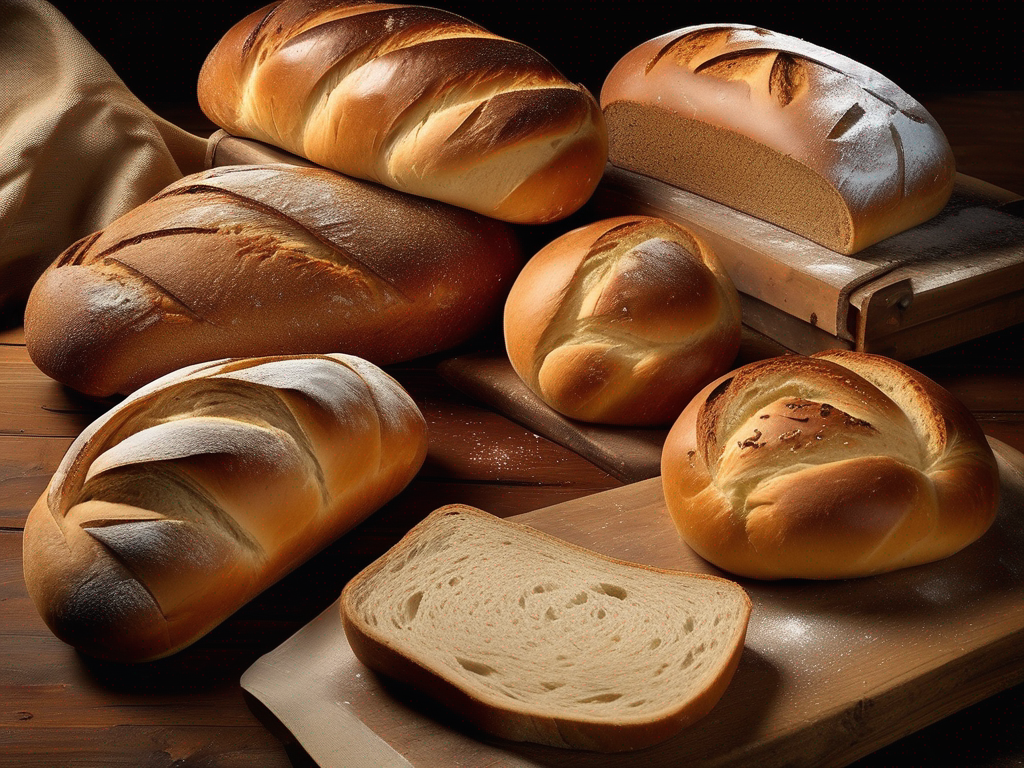
The Best Way to Store Italian Bread for Maximum Freshness
Get Your Free Food Safety Cheat Sheet
30 most common foods with instant answers. Print it and stick it on your fridge—completely free!
The Best Way to Store Italian Bread for Maximum Freshness
When it comes to storing Italian bread, ensuring maximum freshness is key to preserving its delicious flavor and texture. Whether you have leftover bread from a bakery or homemade loaf, proper storage techniques can make a significant difference in extending its shelf life. In this guide, we will explore the best practices for storing Italian bread to maintain its quality for as long as possible. (Italian bread)
Understanding the Characteristics of Italian Bread
Italian bread is known for its crusty exterior and soft, airy interior. It is typically made with simple ingredients such as flour, water, yeast, salt, and sometimes olive oil. The texture and flavor of Italian bread can vary depending on the type, such as ciabatta, focaccia, or baguette. Understanding the characteristics of Italian bread is essential for determining the most suitable storage method.
Factors Affecting Bread Freshness
Several factors can impact the freshness of Italian bread, including:
- Moisture Content: Bread with higher moisture content tends to stale faster.
- Exposure to Air: Oxygen can accelerate the staling process by causing moisture loss.
- Temperature: Storing bread at the right temperature can help maintain its freshness.
- Humidity: High humidity levels can lead to mold growth, while low humidity can cause bread to dry out.
Best Practices for Storing Italian Bread
To ensure your Italian bread stays fresh and flavorful, follow these best practices for storage:
1. Store at Room Temperature
Italian bread is best stored at room temperature to maintain its texture and flavor. Avoid refrigerating bread unless necessary, as cold temperatures can expedite staling. If you plan to consume the bread within a day or two, keeping it at room temperature is ideal.
2. Use a Bread Box or Paper Bag
- Bread Box: A bread box with ventilation holes can help regulate airflow around the bread, preventing it from becoming too moist or dry.
- Paper Bag: If you don't have a bread box, store Italian bread in a paper bag to allow for some airflow while protecting it from excess moisture.
3. Wrap in a Clean Cloth or Towel
Wrapping Italian bread in a clean cloth or towel can help maintain its crust while preventing it from drying out. Avoid using plastic bags or containers, as they can trap moisture and lead to a soggy texture.
4. Freeze for Long-Term Storage
If you have a large quantity of Italian bread or want to store it for an extended period, freezing is the best option. Follow these steps for freezing Italian bread:
- Allow the bread to cool completely before freezing to prevent condensation.
- Wrap the bread tightly in plastic wrap or aluminum foil to protect it from freezer burn.
- Place the wrapped bread in a resealable freezer bag or airtight container.
- Label the container with the date to track its freshness.
5. Reheat Before Serving
When ready to enjoy your stored Italian bread, reheat it in the oven for a few minutes to restore its crisp crust and soft interior. Avoid microwaving bread, as it can make it rubbery or tough.
Conclusion
Proper storage is essential for maintaining the freshness and quality of Italian bread. By following the tips outlined in this guide, you can ensure that your bread stays delicious for longer periods. Whether you opt for room temperature storage, a bread box, or freezing, the key is to protect the bread from moisture and air exposure. Experiment with different storage methods to find the one that works best for your preferences and needs. Enjoy your Italian bread at its peak freshness with these effective storage practices. (Italian bread)
Authoritative Food Safety References
These agencies and university labs inform every tip and health precaution we publish.
USDA FoodKeeper – Cold Storage Guidelines
Official refrigerator, freezer, and pantry timelines maintained by the U.S. Department of Agriculture.
Visit USDA FoodKeeperFDA Produce Safety Rule & Grower Guidance
Field-to-fridge handling practices that prevent contamination of fruits, vegetables, and leafy greens.
Visit FDA Produce SafetyCDC Foodborne Illness Prevention Hub
Surveillance-backed guidance on pathogens, symptoms, and steps to reduce foodborne illness risk.
Visit CDC Food SafetyUC Davis Postharvest Technology Center
University research detailing optimal storage atmospheres for produce after harvest.
Visit UC Davis PostharvestPenn State Extension – Home Food Preservation & Safety
Peer-reviewed extension bulletins on safe canning, chilling, and reheating practices.
Visit Penn State ExtensionGet Your Free Food Safety Cheat Sheet
30 most common foods with instant answers. Print it and stick it on your fridge—completely free! Want more? Upgrade to the complete guide with 70+ foods.
Scan your food directly and get instant safety info using our AI-powered camera feature.